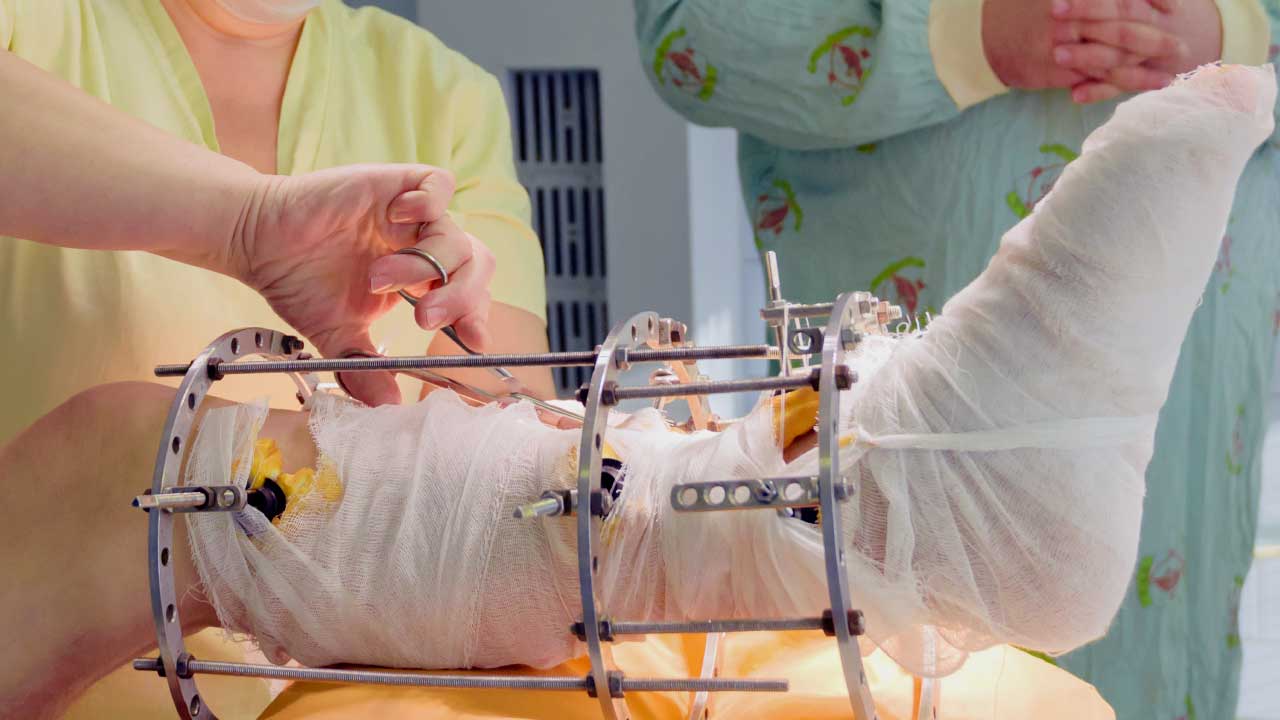When faced with complex bone fractures, understanding the available surgical techniques can significantly impact recovery and long-term outcomes. Two primary methods, internal fixation and external fixation, are commonly used by orthopedic surgeons to stabilize fractures and promote healing. Here’s a comprehensive guide to help you understand these surgical techniques, their benefits, and considerations for treatment:
What is Internal Fixation?
Internal fixation involves surgically placing metal plates, screws, or rods directly into the bone to hold it in place while it heals. This method provides immediate stability, allowing for early mobilization and quicker recovery. It is often preferred for fractures in the arms, legs, pelvis, and joints.
Benefits of Internal Fixation
- Stable Alignment: Helps maintain proper bone alignment during healing.
- Faster Recovery: Allows for earlier weight-bearing and rehabilitation.
- Reduced Risk of Infection: Internal hardware reduces exposure to external contaminants.
What is External Fixation?
External fixation involves placing metal pins or screws outside the body, connected to a stabilizing frame or rod. This technique is used when internal fixation is not feasible or during initial stabilization before internal surgery. It is common for severe open fractures or fractures with soft tissue damage.
Benefits of External Fixation
- Immediate Stabilization: Provides stability without further damaging fragile tissues.
- Facilitates Wound Care: Allows for easier access to wounds for cleaning and dressing changes.
- Adjustable: Frame can be adjusted to accommodate swelling or healing changes.
Choosing the Right Technique
The choice between internal and external fixation depends on various factors, including the type and location of the fracture, overall health of the patient, and surgeon preference. Both methods aim to promote bone healing and restore function while minimizing complications.
Health Tip: Nutrition and Healing
Ensure a balanced diet rich in protein, vitamins (especially vitamin D and calcium), and minerals to support bone healing and overall recovery post-surgery. Consult with a healthcare provider for personalized dietary recommendations.
FAQs about Surgical Techniques for Bone Fractures
Q: How long does recovery take after internal fixation?
A: Recovery time varies depending on the fracture severity and individual healing factors. Typically, patients start physical therapy soon after surgery to regain strength and mobility.
Q: Is external fixation painful?
A: Discomfort is common initially, but pain medications and proper care can alleviate discomfort. Regular follow-up appointments are essential to monitor healing and manage any issues.
Q: Can complications arise from internal fixation?
A: While uncommon, complications such as infection, hardware failure, or non-union (failure of the bone to heal) may occur. Close monitoring by healthcare providers helps detect and manage these issues promptly.
Summarized Takeaway
- Internal fixation provides stable internal support for faster recovery and reduced infection risk.
- External fixation offers immediate stability and facilitates wound care for complex fractures.
- Consult with an orthopedic surgeon to determine the most suitable surgical technique based on individual fracture characteristics and health status.
Understanding the differences between internal and external fixation techniques empowers patients to make informed decisions about their bone fracture treatment. By collaborating closely with healthcare providers and adhering to post-operative care guidelines, patients can optimize their recovery and regain functionality effectively.
Learn more about bone fracture treatments and consult with best orthopedic specialist Dr.Rishabh Jaiswal in Lucknow UP to determine the best surgical approach for your condition.








